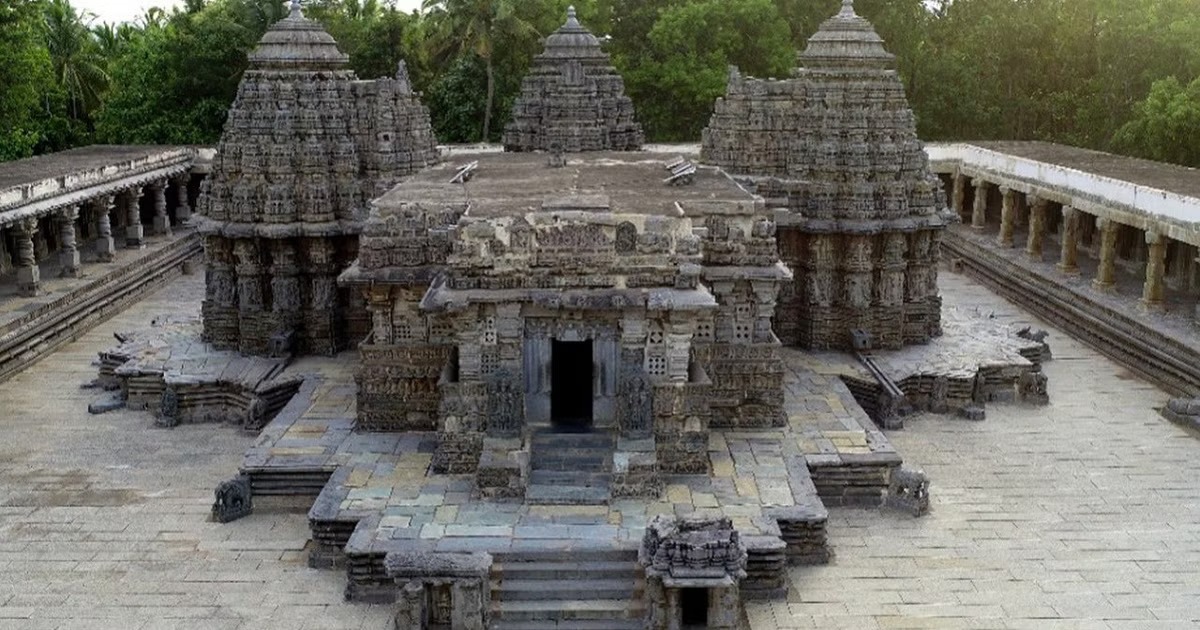Three Hoysala temples declared World Heritage Sites
Context
The Hoysala temples at Belur, Halebid, and Somanathapur in Karnataka were designated UNESCO World Heritage Sites on Monday. This decision will provide these locations with international prominence and the potential for an increase in tourism.
What are the World Heritage sites?
World Heritage Sites are locations or structures that are regarded as having exceptional universal importance. They have been recognized as having cultural, historical, scientific, or other value by UNESCO. An international treaty protects these sites, which are spread across more than 160 nations.
The Galápagos Islands served as the first World Heritage Site. T
These are the requirements for World Heritage Sites:
- Significance on a cultural or natural level
- Significance that goes beyond national boundaries
- importance for both current and future human generations
The international community is united in a common mission to identify and safeguard the world’s most outstanding natural and cultural heritage.
Which sites are the recent additions to the world heritage sites?
- The Hoysaleshwara temple in Halebid and the Chennakeshava temple in Belur have been included on UNESCO’s preliminary list since 2014.
- The Somanathapur Keshava temple was added to the tentative list in 2022, and the Indian government formally proposed all three for UNESCO World Heritage designation.
- Following that, they were included in the list of World Heritage Sites during the World Heritage Committee’s 45th session.
What is the historical background behind the temples?
- Known for its distinctive temple design, the Hoysala dynasty dominated the Deccan region of India between the 10th and 14th centuries. The best examples of this unique architectural style are the temples at Belur, Halebid, and Somanathapur.
- From the 10th to the 14th century, South India, particularly Karnataka, was dominated by the Hoysala dynasty. Belur served as the dynasty’s first capital before it was eventually shifted to Halebidu. Hoysalas were renowned for their bravery and power.
- The earliest Hoysala family record is from the year 950. Arekalla was the first chieftain, followed by Maruga and Nripa Kama I. Munda succeeded him and ruled from 1006 to 1026.
- The Hoysalas held sway over the Kaveri (Cauvery) River basin and the southern Deccan. Dorasamudra, which is now Halebid, served as their capital.
- For almost 20 years, the Hoysalas repelled an invasion by Muslims. King Ballal III of the Hoysala Empire was however assassinated by Delhi Sultanate soldiers at the Battle of Madurai in 1343 CE.
- The Hoysalas created a type of architecture known as Hoysala architecture.
What is the Architectural significance of the Temples?
- These Hoysala temples are renowned for their exquisite carvings and stunning architecture.
- They are constructed on elevated platforms and have a stellate layout. Because soapstone (chlorite schist) was used in the building, intricate carving was possible.
- The sculptures and horizontal friezes, many of which include the signatures of the artisans, are unheard of in Indian art history.
What are the specifications of the Hoysala architecture?
- The building style known as Hoysala architecture was created between the 11th and 14th centuries while the Hoysala Empire was mostly centered in southern Karnataka.
- Hoysala temples are sometimes referred to as hybrid or vesara because of their distinctive style, which appears to be a cross between the Dravida and Nagara styles.
- The Hoysala temples are composed of several shrines arranged in the shape of an intricately constructed star and centred around a central pillared hall.
- They are constructed from the comparatively soft stone known as soapstone.
- Their highly unusual star-like ground designs and an abundance of ornate carvings make them stand out from other medieval temples.
What are the benefits of adding the temples to the UNESCO World Heritage list?
- Global acknowledgement and Prestige: The UNESCO World Heritage designation is a symbol of prestige and global acknowledgement. It implies that not just for India but for the entire human race, the Hoysala temples are of exceptional cultural and historical worth. These sites’ international reputation is improved by this designation.
- Cultural Preservation: When a site is designated as a World Heritage Site, preservation and protection measures are frequently stepped up. This may entail providing funds for conservation initiatives, tightening restrictions on construction around the sites, and raising public awareness of the need for their preservation.
- Benefits to Tourism and the Economy: UNESCO certification can result in a large rise in tourism. World Heritage Sites are more likely to attract tourists from across the world, which can help the local economy by increasing the number of tourism-related companies like hotels, restaurants, and handicraft shops.
- Education and Awareness: Important educational resources are World Heritage Sites. They stand for both historical significance and cultural diversity. To enhance awareness and knowledge of these places, both locally and globally, UNESCO frequently funds educational projects and activities.
- Community Pride and Involvement: The local people near World Heritage Sites frequently take great pleasure in their cultural heritage and are actively involved in it. Being a part of a World Heritage Site can increase locals’ sense of ownership and accountability, which can motivate them to actively participate in the site’s protection and marketing.
- worldwide Cooperation: To preserve World Heritage Sites, UNESCO promotes worldwide cooperation. This may entail cooperating with other nations who are struggling with comparable preservation issues by exchanging knowledge, technology, and best practices.





